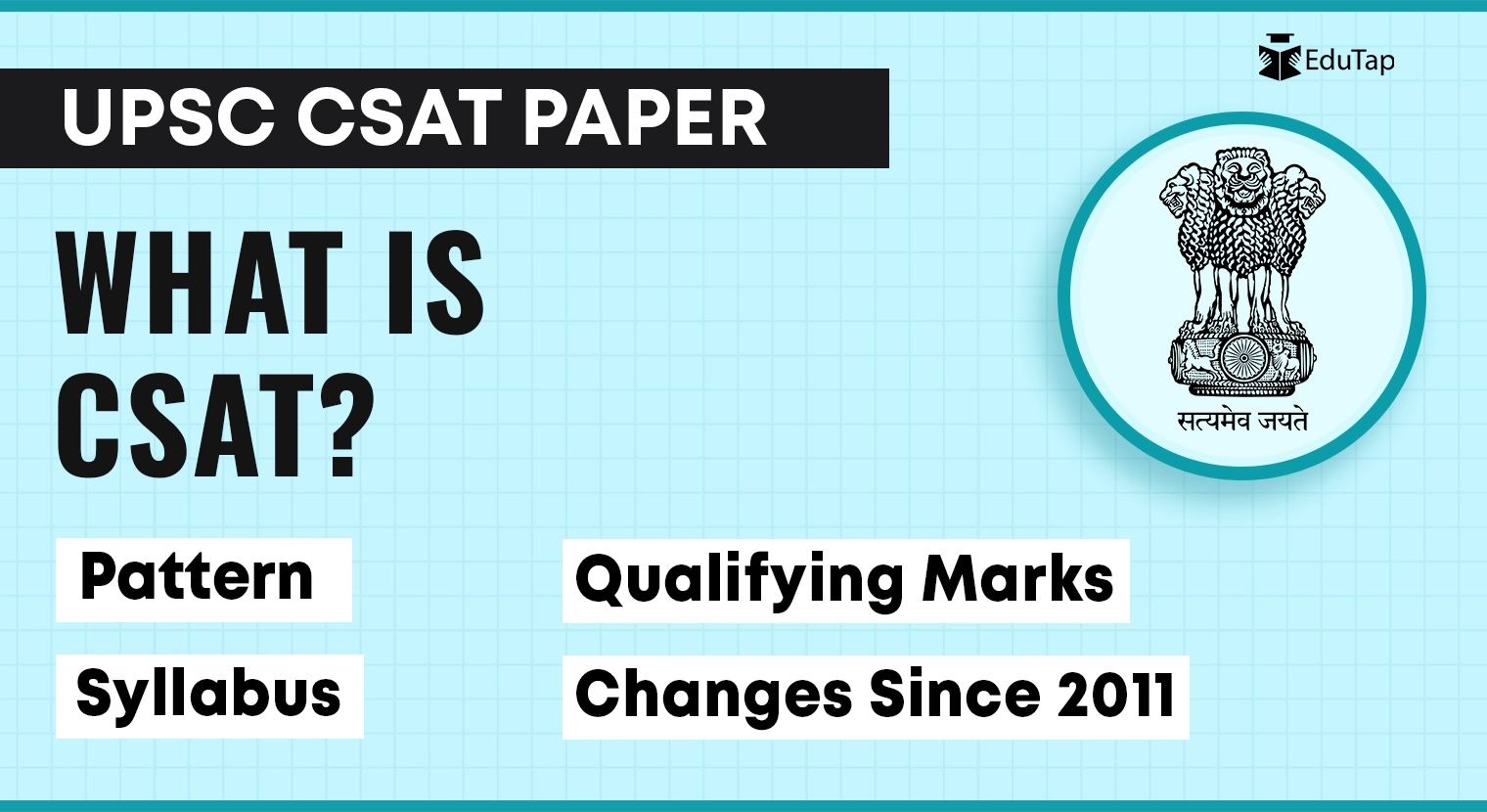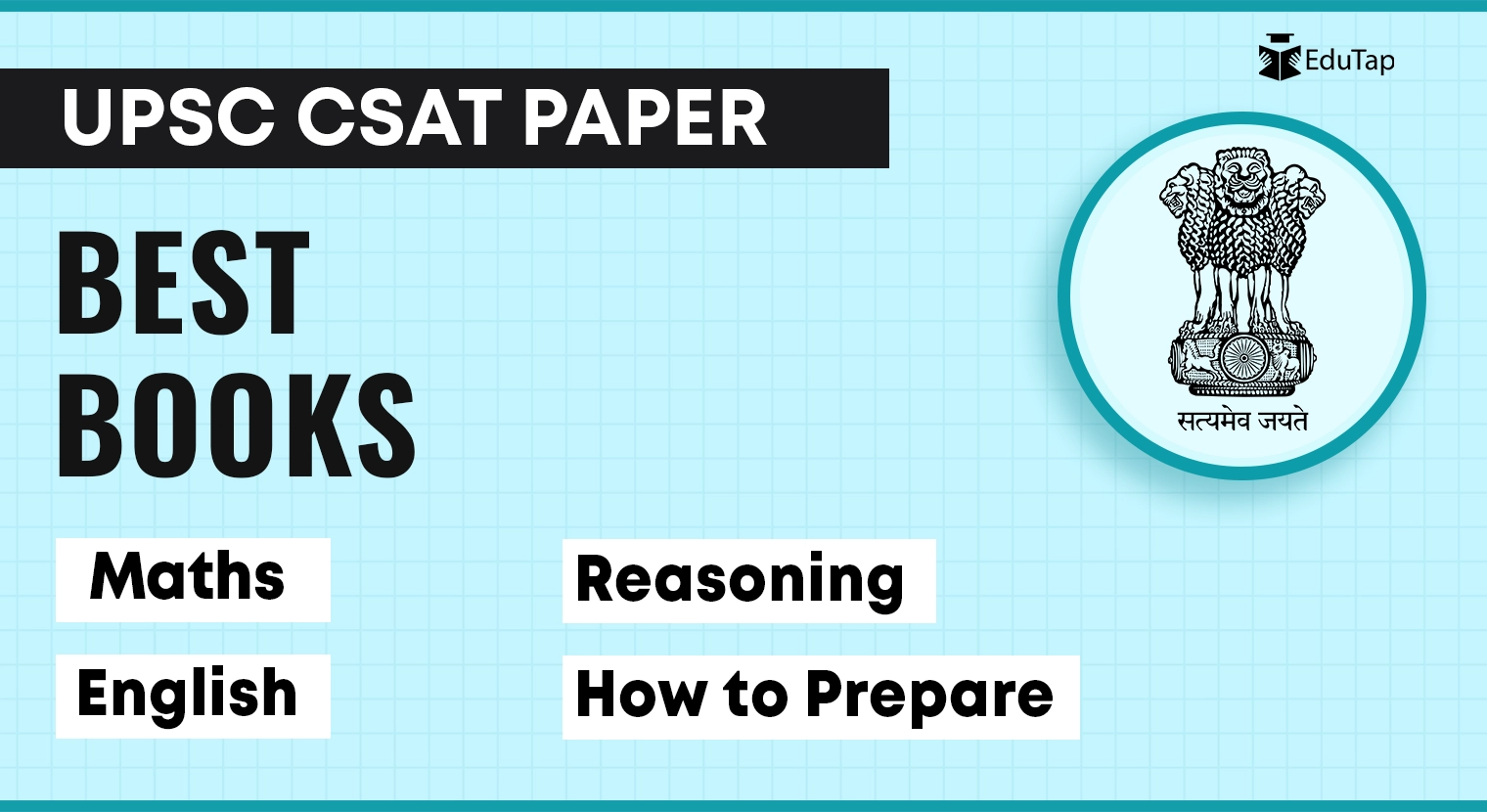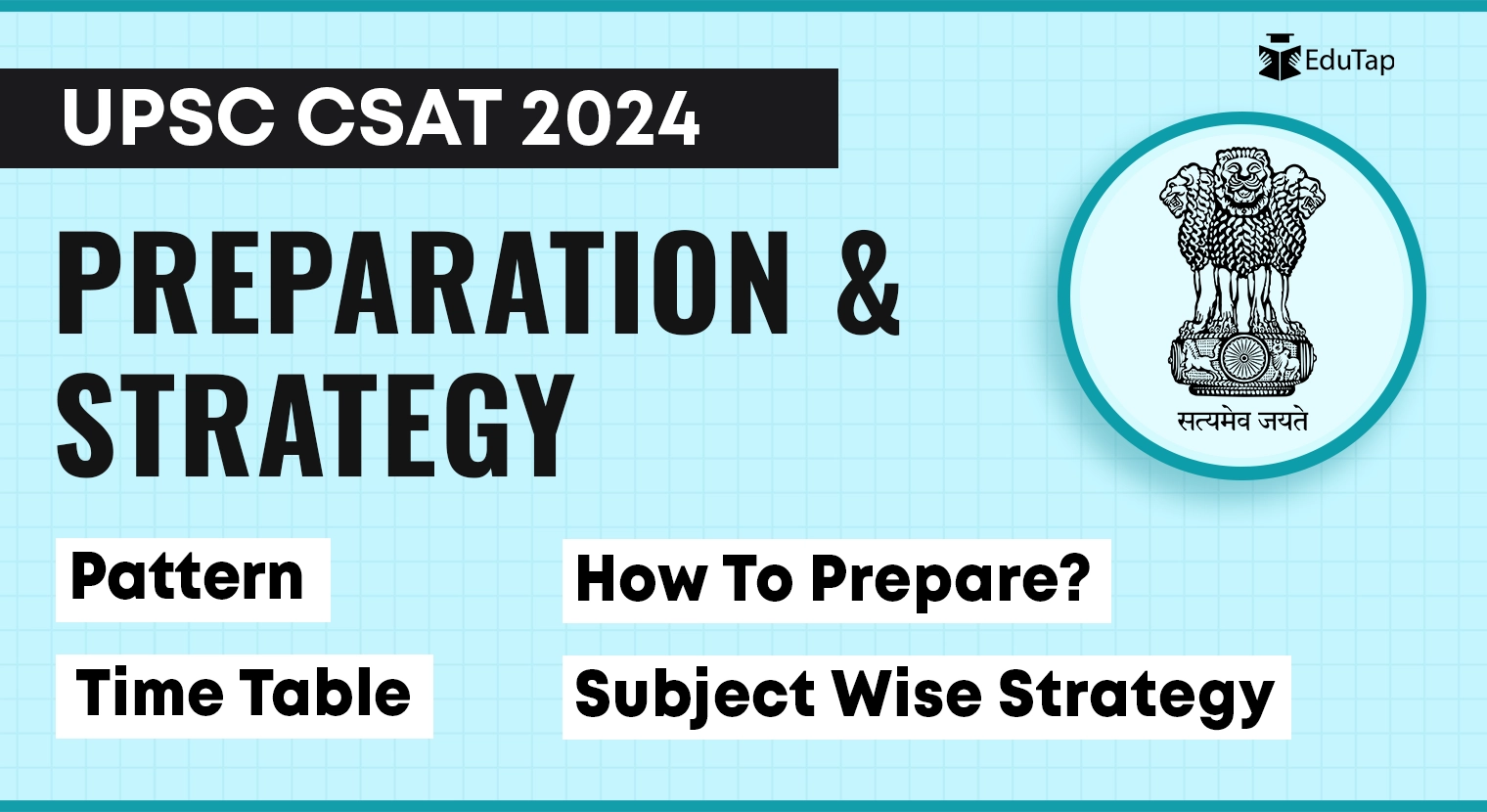Whether you’re a seasoned UPSC aspirant or just starting your journey, understanding the CSAT exam is crucial for you to tailor your preparation to its specific demands.
In this article, we’ll provide you with a complete guide to the UPSC CSAT exam, including its history, pattern, eligibility criteria, syllabus, etc.
What is CSAT?
The full form of CSAT is the Civil Services Aptitude Test, also known as UPSC Prelims General Studies Paper 2. It was introduced as a major reform in the UPSC examination pattern in 2011 to test the aspirants’ analytical skills, interpersonal ability, decision-making, general mental ability, aptitude, and reasoning ability. Here’s a brief history of CSAT:
Introduction of CSAT in 2011
CSAT was introduced in 2011 by the UPSC, the governing body responsible for conducting the Civil Services Examination in India. Before 2011, the UPSC preliminary exam consisted of two papers:
- Paper I: General Studies.
- Paper II: One subject to be selected from the list of optional subjects.
However, the UPSC introduced CSAT in 2011 as a Paper 2 alongside the General Studies Paper 1 to make the prelims more objective and assess the aptitude of aspirants. This marked a significant change in the examination pattern.
CSAT Structure from 2011-2014
From its introduction in 2011 till 2014, the marks of both General Studies Paper 1 and Paper 2 (CSAT paper), were added to calculate the cut-off marks for the UPSC Prelims exam.
Controversy and Concerns
The introduction of CSAT faced criticism and concerns, particularly from some aspirants who felt the paper was biased against candidates from certain educational backgrounds. There were protests and demands for its removal.
Changes and Reforms in 2015
In response to the concerns raised by aspirants, the UPSC made changes in 2015 by making CSAT General Studies Paper 2 qualifying in nature. It meant that the marks scored by a candidate in this paper were not to be counted to calculate the cut-off of the prelims exam. However, a candidate will have to score at least 66 marks (33%) out of the total 200 marks to qualify the CSAT paper.
Now that you have understood the brief history and changes of the UPSC CSAT exam, let’s understand its pattern.
UPSC CSAT Pattern
We have explained the CSAT exam pattern below to help you understand the CSAT paper’s marking scheme, mode, and qualifying marks.
Number of Papers
The CSAT is the second paper of the UPSC Prelims, with General Studies Paper 1 being the first paper. The CSAT paper is conducted with General Studies Paper 1 on the same day.
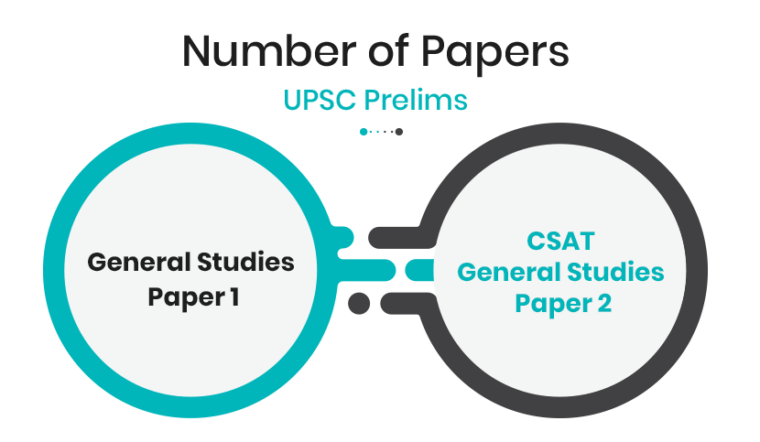
Paper Structure
CSAT Paper 2 is of a qualifying nature and is meant to assess candidates’ aptitude and analytical abilities. It consists of objective-type multiple-choice questions (MCQs).
Time Duration
Candidates have a total of 120 minutes (2 hours) to complete the CSAT Paper 2. During this time, candidates must answer multiple-choice questions (MCQs) that cover various areas such as maths, reasoning, English, decision-making, and data interpretation. Effective time management is crucial to ensure that questions are attempted within the allocated time to score at least 66 marks.
Important note: There is no sectional timing in the CSAT paper.

Total Marks
The total marks for the CSAT General Studies Paper 2 are 200.
Total Number of Questions
There are a total of 80 questions. Each question is worth 2.5 marks, making it a total of 200 marks for 80 questions.

Qualifying Marking
The UPSC CSAT paper is qualifying in nature. With a total of 200 marks available, candidates must score a minimum of 33% marks within 2 hours to qualify this paper, which comes up to 66 marks out of 200.
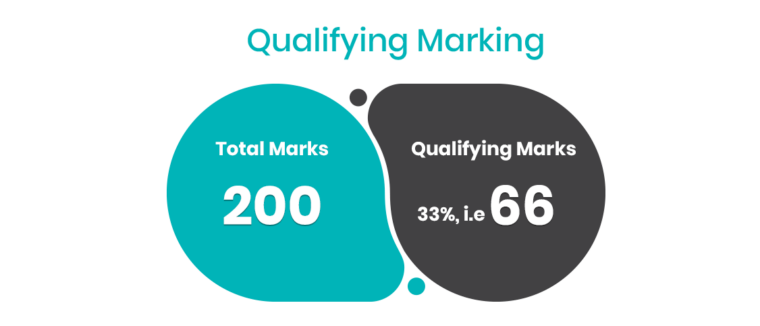
Negative Marking
One-third of the marks allotted to each question i.e. 0.83 marks are deducted for each incorrect answer. No marks are deducted if a candidate leaves a question blank on the OMR sheet.

Mode of Exam
The CSAT is conducted in the offline mode, also known as the pen & paper mode. Candidates are provided with a question paper booklet and an OMR (Optical Mark Recognition) sheet. They must mark their answers by shading the corresponding circles on the OMR sheet using a black ballpoint pen. The OMR sheet is then collected for evaluation.
Paper Language
CSAT is available in both English and Hindi languages. Candidates can answer the CSAT questions in either English or Hindi based on their language preference. This bilingual approach ensures that candidates who are more comfortable with either of these languages can effectively take the CSAT paper in the language of their choice, providing them with a level playing field during the examination.
For your easy understanding, we have provided the above-mentioned information in a table form below.
| UPSC CSAT Pattern | |
| Total Number of Questions | 80 |
| Total Marks | 200 |
| Per Question Marks | 2.5 |
| Total Time | 2 Hours |
| Negative Marking | 1/3rd, i.e. 0.83 marks |
| Qualifying Marks | 33%, i.e. 66 marks |
| Sectional Timing | No |
| Mode of Exam | Offline (Pen and Paper) |
| Paper Type | Objective |
| Paper Language | English and Hindi |
Now that you have understood the CSAT paper pattern, let’s understand its eligibility criteria.

UPSC CSAT Paper Eligibility Criteria
Eligibility to appear for the UPSC Civil Services Examination, including the CSAT paper, is determined based on certain criteria. Here are the key eligibility criteria:
1. Nationality
For the Indian Administrative Service, the Indian Foreign Service, and the Indian Police Service, the candidate must be a citizen of India.
For other services, certain categories of persons, such as citizens of India, Nepal and Bhutan, Tibetan refugees, and individuals of Indian origin who have migrated from certain countries, may also be eligible, subject to specific conditions. Please refer to the latest official UPSC CSE notification for detailed information.
2. Age Limit
The age limit is sub categorised into two limits: upper and lower. The details of the same are given below:-
| The Age Limit for the UPSC CSAT | |
| Minimum Age Limit | Maximum Age Limit |
| 21 Years | 32 Years |
Age Limit Relaxation
In addition to the previously mentioned UPSC CSAT age limit eligibility criteria, there are some specific age relaxations for candidates belonging to certain categories, such as Scheduled Castes (SCs), Scheduled Tribes (STs), Other Backward Classes (OBCs), and others. The extent of the relaxation varies based on the category and other factors.
| UPSC CSAT Age Limit Relaxation | ||
| SNo. | Category | Age Relaxation |
| 1 | OBC | 3 years |
| 2 | SC/ST | 5 years |
3. Minimum Educational Qualification
A candidate must hold a Bachelor’s degree from any of the recognised Universities incorporated by an Act of the Central or State Legislature in India or other educational institutions established by an Act of Parliament or declared to be deemed as a University under Section 3 of the University Grants Commission Act, 1956 or possess an equivalent qualification.
4. Number of Attempts
The number of attempts allowed for the UPSC Civil Services Examination varies based on the candidate’s category:
| Category to which the Candidate Belongs | General | OBC | SC /ST | PWBD |
| Number of Attempts | 06 | 09 | Unlimited | 09 for GL/EWS/OBCUnlimited for SC/ST |
Important Note: The SC/ST category can take unlimited attempts until the candidate reaches the maximum age limit (including age relaxation).
Now that you have a clear understanding of the CSAT paper pattern and eligibility criteria, it’s time to understand the CSAT syllabus.
CSAT Exam Syllabus
The official notification of the UPSC Civil Services Examination specifies the syllabus of the CSAT paper as follows:
- Comprehension
- Interpersonal skills, including communication skills
- Logical reasoning and analytical ability
- Decision-making and problem-solving
- General mental ability
- Basic numeracy (numbers and their relations, orders of magnitude, etc. (Class X level)
- Data interpretation (charts, graphs, tables, data sufficiency, etc. (Class X level)
For easy understanding, the above syllabus can be divided into 3 subjects:
- Maths
- Reasoning
- English
| Subject | Syllabus as per UPSC notification |
| Maths | General mental abilityBasic numeracy (numbers and their relations, orders of magnitude, etc. (Class X level)Data interpretation (charts, graphs, tables, data sufficiency, etc. (Class X level) |
| Reasoning | Logical reasoning and analytical ability |
| English | Comprehension |
Important Note:
We have deliberately not listed “Decision Making and Problem Solving” and Interpersonal skills, including communication skills, in the above table, as no question on these topics has been asked since 2014.
This is an overall view of the CSAT syllabus. Below, we have explained the detailed subject-wise syllabus of the CSAT paper.
Maths Syllabus for UPSC CSAT
Here is the detailed maths syllabus for UPSC CSAT:
- Number System
- HCF and LCM
- Percentage
- Profit and Loss
- Simple Interest
- Compound Interest
- Ratio and Proportion
- Age and Partnership
- Data Interpretation
- Time and Work
- Pipes and Cistern
- Time, Speed and Distance
- Boats and Stream
- Average
- Alligation and Mixture
- Mensuration 2D and 3D
- Permutation and Combination
- Probability
- Number Series
Most Important Topics for CSAT Maths
We have carefully analysed the number of questions asked from each topic of maths in the past years. Based on our analysis, here are the most important topics for CSAT maths:
- Number System
- HCF and LCM
- Percentage
- Profit and Loss
- Ratio and Proportion
- Age and Partnership
- Time and Work
- Time, Speed, and Distance
- Average
- Mensuration 2D and 3D
- Permutation and Combination
- Probability
- Number Series
Important Note:
- When preparing for the maths section of the CSAT paper, remember to practise regularly and solve various problems to cover different types and difficulty levels.
- Consider taking mock tests to simulate the exam environment and improve your time management skills.
Reasoning Syllabus for UPSC CSAT
Here is the detailed reasoning syllabus for the UPSC CSAT:
- Syllogism
- Blood Relation
- Direction Sense
- Alphabetical and Alphanumeric Series
- Coding and Decoding
- Analogy
- Calendar
- Clock
- Counting Figure
- Cube and Cuboid
- Dice
- Continuous Letter Series
- Ranking and Order
- Arrangement and Puzzle
Important Topics for CSAT Reasoning
Like maths, we have also analysed the reasoning questions from the previous years, and based on our analysis, here are the most important topics for CSAT reasoning:
- Syllogism
- Blood Relation
- Direction Sense
- Alphabetical and Alphanumeric Series
- Coding and Decoding
- Calendar
- Clock
- Continuous Letter Series
- Ranking and Order
Important Note:
- While preparing for the reasoning section, focus on understanding basic concepts to develop a strong logical and analytical thinking foundation.
- Solve multiple problems from different topics and gradually increase the complexity.
- Remember, reasoning is a skill that needs practice, critical thinking, and a systematic approach.
English Syllabus for UPSC CSAT
Here is the detailed English syllabus for the UPSC CSAT:
- Reading Comprehension
- Assumption
- Inference
- Conclusion
Most Important Topics for CSAT English
Reading comprehension is the only topic from which questions are asked in the CSAT paper of UPSC prelims. There are 4 types of passages that are asked. Level 1 passages consist of only 1 question after the comprehension. Similarly, level 2, level 3, and level 4 passages consist of 2,3 and 4 questions, respectively.
Important Note:
- Develop a habit of regularly reading newspapers, magazines, and quality online articles.
- Focus on diverse topics to improve your overall comprehension skills.
- Practice speed reading to develop speed reading skills, allowing you to read passages more quickly while retaining comprehension.
For more detail, Download the UPSC CSAT Paper Comprehensive Guide.
Important Dates of the CSAT Paper 2024
According to the UPSC 2024 exam calendar, the important dates for UPSC CSAT 2024 are as follows:
| Event | Date |
| Release of Notification | 14 February 2024 |
| Filling of Application Form | 14 February 2024 to 5 March 2024 |
| Prelims General Studies Paper 1 &Prelims General Studies Paper 2 (CSAT) | 26 May 2024 |
| UPSC Mains exam | 20 September 2024 |

Conclusion
In conclusion, you need to score at least 66 marks (33%) out of 200 within 2 hours to qualify the CSAT paper. There is no sectional timing; however, there is a 1/3rd (0.83) negative marking for each wrong answer. Understanding its pattern, syllabus, and important topics can help you create a well-structured study plan. Remember that the CSAT paper, although qualifying in nature, demands focused preparation, regular practice, and a disciplined approach to succeed.
FAQs
Yes, the CSAT paper is compulsory for all candidates who appear for the UPSC Civil Services Preliminary Examination. However, it is a qualifying nature, and you need to score at least 66 marks to qualify.
While the CSAT is considered a qualifying paper, it’s important not to underestimate its significance.
a. Start by thoroughly reviewing the CSAT syllabus and identifying the important topics.
b. Take at least 2 previous years’ question papers to understand your strong and weak areas.
c. Focus on practising and improving your skills, especially in weak areas.
d. Additionally, regularly attempt mock exams to enhance your confidence and readiness for the CSAT.
No, the CSAT is considered a qualifying paper, and its marks are not added to the final score. However, candidates must secure the minimum qualifying marks (66 marks) in CSAT to be eligible for the Mains.
After the protests held by UPSC aspirants after the 2023 CSAT paper, there were some discussions and proposals to remove the CSAT from the UPSC Civil Services Examination. However, no official decision to remove or retain the CSAT had been confirmed at that time.
